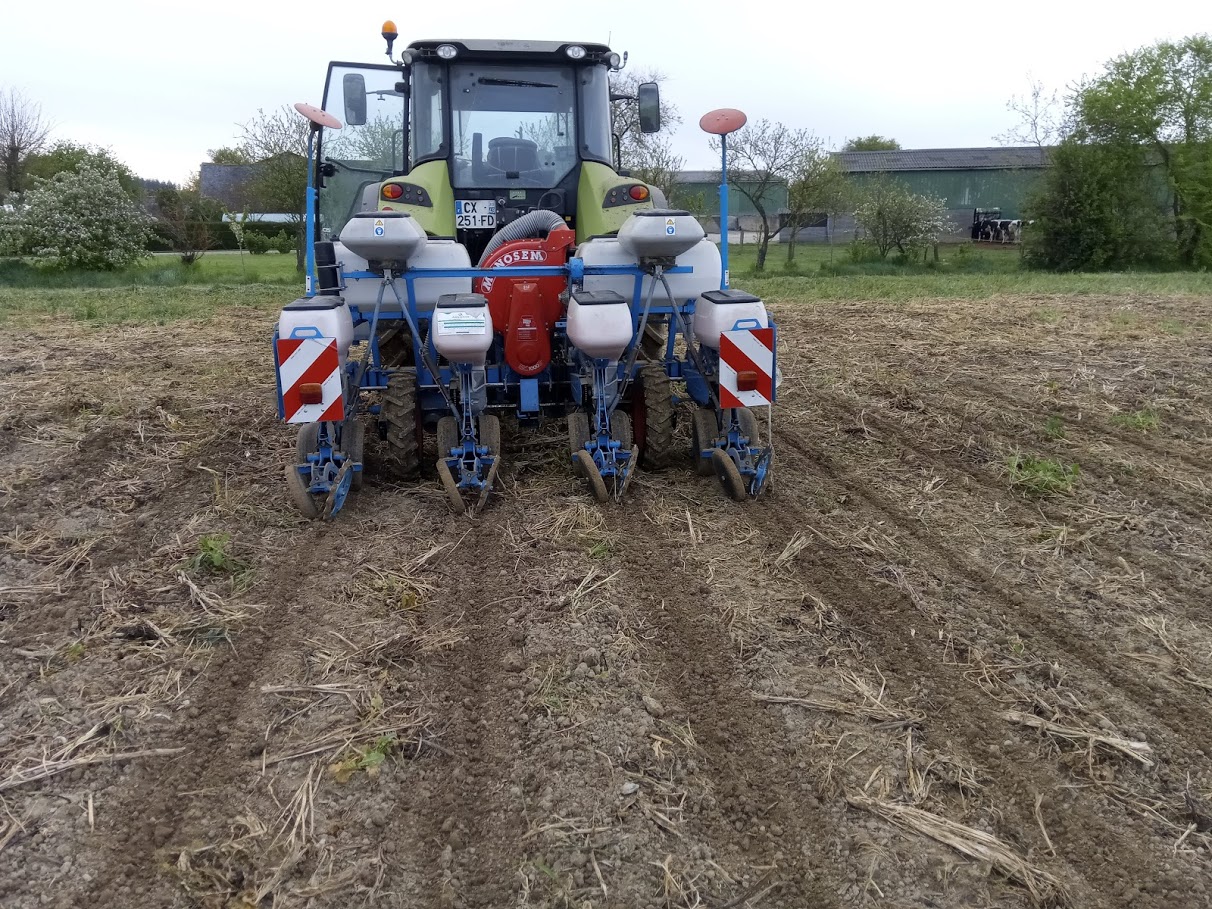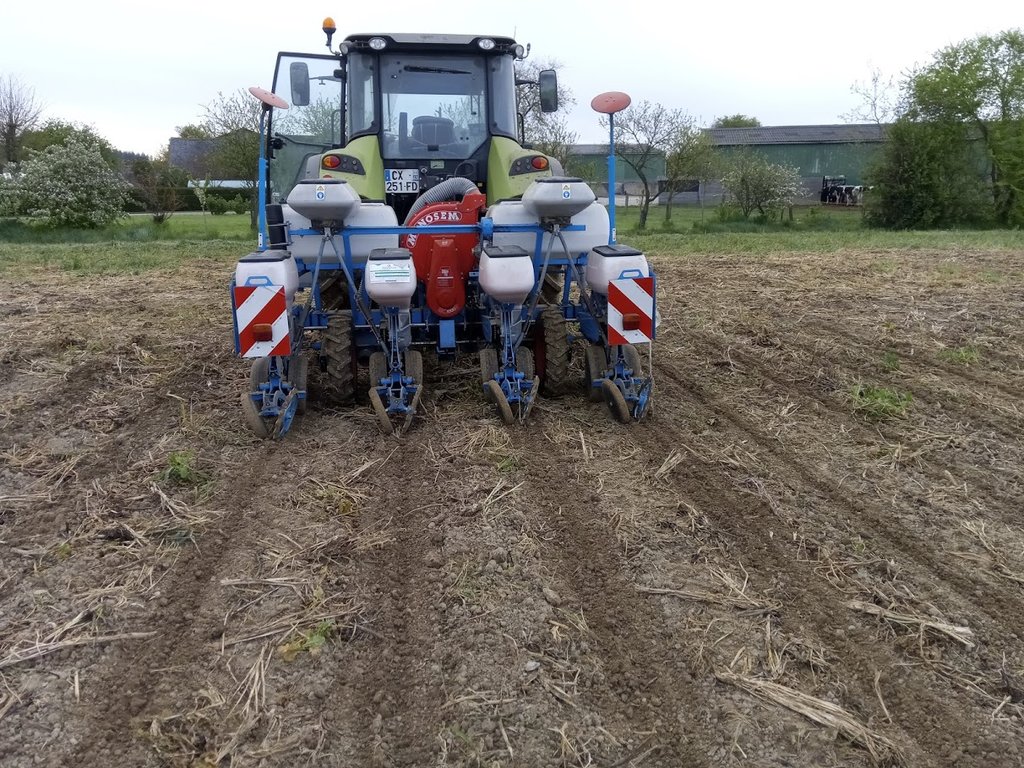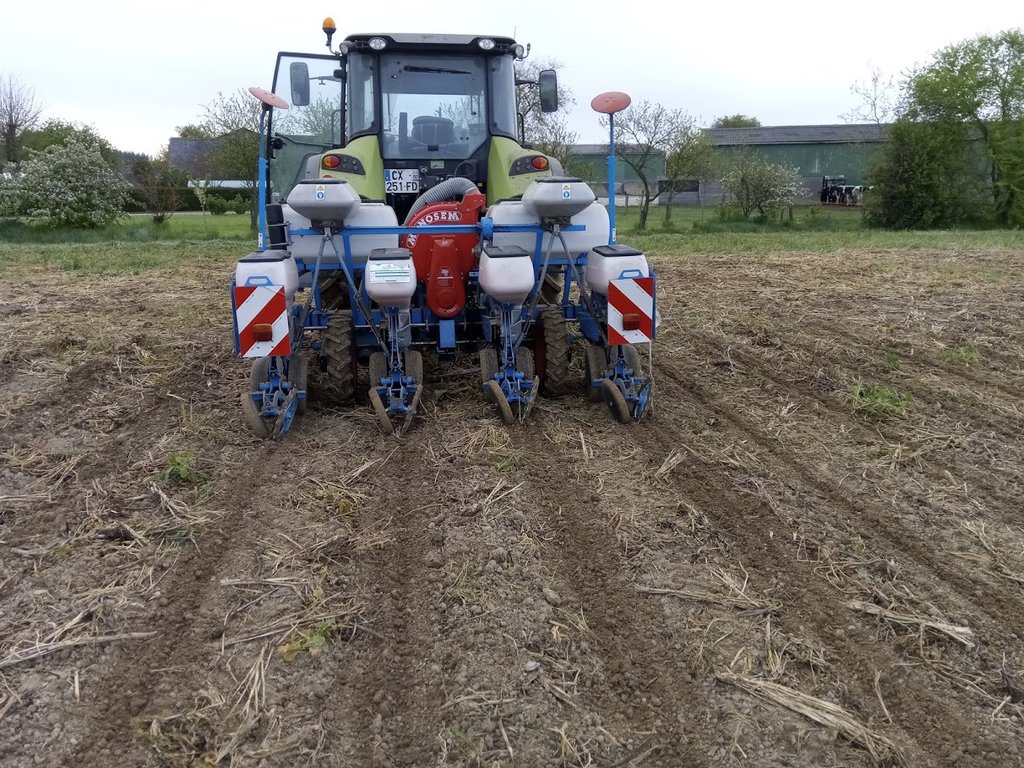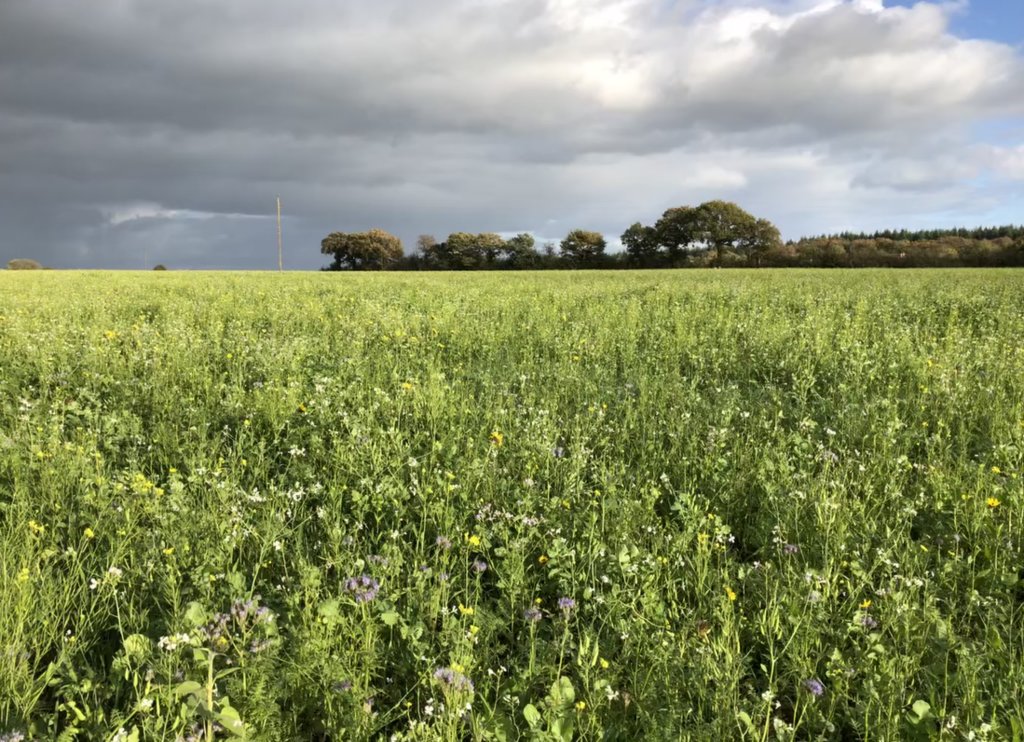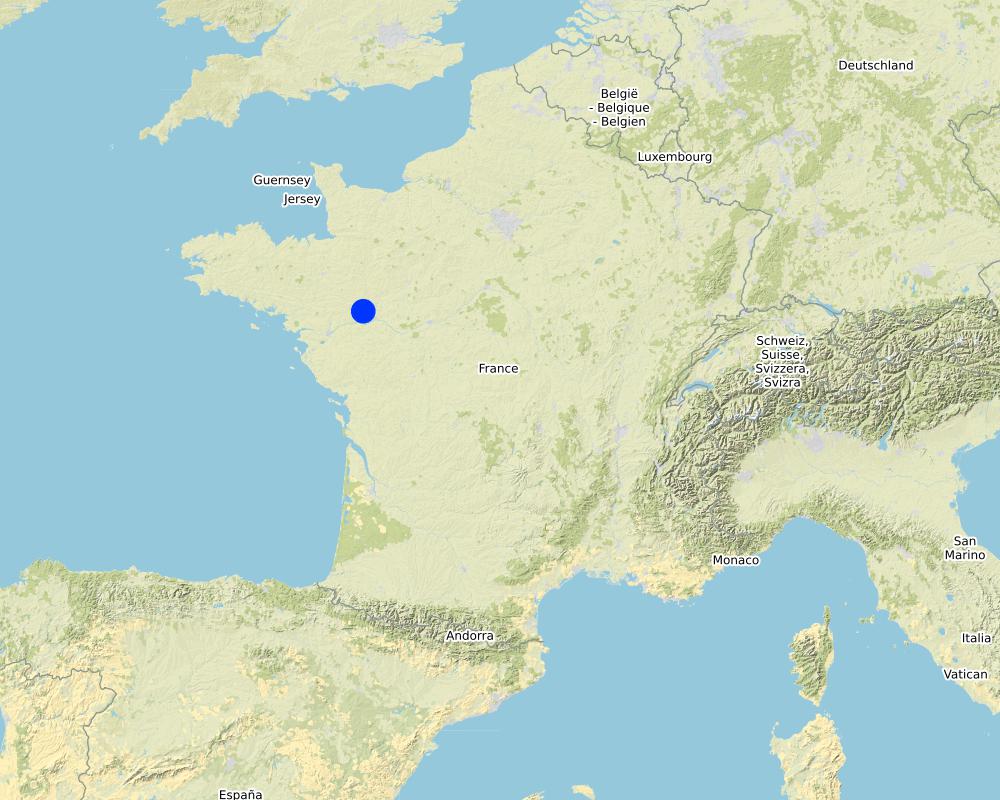Rotation 2+2 of cereals in a no-tillage system [France]
- Creation:
- Update:
- Compiler: Alan Radbourne
- Editors: David Robinson, David Norris, Sabine Reinsch
- Reviewers: Rima Mekdaschi Studer, William Critchley
Rotation 2+2
technologies_5678 - France
View sections
Expand all Collapse all1. General information
1.2 Contact details of resource persons and institutions involved in the assessment and documentation of the Technology
Key resource person(s)
co-compiler:
Faure Marie-Line
Chamber of Agriculture of Pays de Loire
France
land user:
Colineau Denis
Gaec Des Emeraudes
France
co-compiler:
Drouet Baptiste
Chamber of Agriculture of Pays de Loire
France
Name of project which facilitated the documentation/ evaluation of the Technology (if relevant)
European Interreg project FABulous FarmersName of the institution(s) which facilitated the documentation/ evaluation of the Technology (if relevant)
UK Centre for Ecology & Hydrology (CEH) - United KingdomName of the institution(s) which facilitated the documentation/ evaluation of the Technology (if relevant)
Association des Chambres d’agriculture de l’Arc Atlantique (AC3A) - France1.3 Conditions regarding the use of data documented through WOCAT
The compiler and key resource person(s) accept the conditions regarding the use of data documented through WOCAT:
Yes
1.4 Declaration on sustainability of the described Technology
Is the Technology described here problematic with regard to land degradation, so that it cannot be declared a sustainable land management technology?
No
2. Description of the SLM Technology
2.1 Short description of the Technology
Definition of the Technology:
A trial crop rotation system of '2+2', where a succession of two spring crops (maize) followed by two winter crops (wheat) aims to diversify cropping through rotation (sequences and intervals) while limiting weed pressure under a no-tillage system.
2.2 Detailed description of the Technology
Description:
The region Pays de Loire in Western France has a temperate climate with warm summers and mild winters. The region has many rural areas, dedicated mostly to agriculture with large economic centres and urban conurbations (e.g. the Nantes area). The rotation 2+2 technology is being applied on a dairy farm in Pays de Loire (La Pouëze), implementing Soil Conservation Agriculture. Fields have not been ploughed for 9 years and direct seeding of cover crops (primarily clover that is cut as green mulch, although may be cut for silage) and winter crops has been used for 4 years.
The rotation Maize/Wheat/Maize/Wheat was changed to a Maize/Maize/Wheat/Wheat rotation (2+2). In the traditional rotation Maize/Wheat/Maize/Wheat, there were 2 sequences (wheat followed by maize and maize followed by wheat) and 1 interval cover cropping (every two years). In the new 2+2 rotation Maize/Maize/Wheat/Wheat, the crops in the rotation are not changed but the number of sequences is doubled (4 sequences: wheat/wheat; maize/maize; wheat/maize; maize/wheat) and there are 2 cover cropping intervals (years 0 & 3) instead of one. This 4 year cycle can then be repeated. This modification allows more diversity in the rotation including variation in timing of the cover crops (some long gaps between wheat and maize, some short between wheat and wheat) and, in our no tillage system, helps to limit weed pressure on both crops.
In a no-tillage system, keeping weed seeds on the surface exposes them to climatic hazards and predators. Thus in this new system regime, during the two years of maize, the wheat weed seeds are neither in optimal conditions for dormancy, nor in optimal conditions for germination, which decreases the stock of seeds of wheat weeds. Thus in our no tillage system, the weed pressure (including resistant rye grass) has been significantly reduced.
The 2+2 rotation improved production, reduced/prevented land degradation and reduced weed pressure.
Initial investment costs are limited to purchasing the management equipment.
Benefits of the 2+2 rotation include:
Increased: crop production, farm income, water drainage, nutrient cycling, soil organic matter carbon, vegetation cover, beneficial species, habitat diversity
Reduced: risk of production failure, workload/time, fuel surface water runoff, evaporation, soil crusting, soil compaction, impact on soil life, weed emergence
The compilation of this SLM technology is a part of the European Interreg project FABulous Farmers which aims to reduce the reliance on external inputs by encouraging the use of methods and interventions that increase the farm’s Functional AgroBiodiversity (FAB). Visit www.fabulousfarmers.eu and www.nweurope.eu/Fabulous-Farmers for more information.
2.3 Photos of the Technology
2.4 Videos of the Technology
Comments, short description:
None available.
2.5 Country/ region/ locations where the Technology has been applied and which are covered by this assessment
Country:
France
Region/ State/ Province:
Pays de la Loire
Further specification of location:
La Pouëze
Specify the spread of the Technology:
- evenly spread over an area
If precise area is not known, indicate approximate area covered:
- 0.1-1 km2
Is/are the technology site(s) located in a permanently protected area?
No
Map
×2.6 Date of implementation
If precise year is not known, indicate approximate date:
- less than 10 years ago (recently)
2.7 Introduction of the Technology
Specify how the Technology was introduced:
- through land users' innovation
- through projects/ external interventions
Comments (type of project, etc.):
Soil training sessions, trade fairs and farmers groups have supported the land user's innovation
3. Classification of the SLM Technology
3.1 Main purpose(s) of the Technology
- improve production
- reduce, prevent, restore land degradation
- reduced weed pressure
3.2 Current land use type(s) where the Technology is applied
Land use mixed within the same land unit:
No

Cropland
- Annual cropping
Annual cropping - Specify crops:
- cereals - maize
- cereals - wheat (winter)
Number of growing seasons per year:
- 1
Is intercropping practiced?
No
Is crop rotation practiced?
Yes
If yes, specify:
Maize/Maize/Wheat/Wheat
3.3 Has land use changed due to the implementation of the Technology?
Has land use changed due to the implementation of the Technology?
- No (Continue with question 3.4)
3.4 Water supply
Water supply for the land on which the Technology is applied:
- rainfed
3.5 SLM group to which the Technology belongs
- rotational systems (crop rotation, fallows, shifting cultivation)
- improved ground/ vegetation cover
- minimal soil disturbance
3.6 SLM measures comprising the Technology

agronomic measures
- A1: Vegetation/ soil cover
- A2: Organic matter/ soil fertility
- A3: Soil surface treatment
3.7 Main types of land degradation addressed by the Technology

soil erosion by water
- Wt: loss of topsoil/ surface erosion

chemical soil deterioration
- Cn: fertility decline and reduced organic matter content (not caused by erosion)

physical soil deterioration
- Pc: compaction

biological degradation
- Bl: loss of soil life
- Bp: increase of pests/ diseases, loss of predators
3.8 Prevention, reduction, or restoration of land degradation
Specify the goal of the Technology with regard to land degradation:
- reduce land degradation
4. Technical specifications, implementation activities, inputs, and costs
4.1 Technical drawing of the Technology
Technical specifications (related to technical drawing):
Keeping the crop distribution (overall area of maize and wheat at farm scale unchanged), the rotation 2+2 allows more resiliance in the sequences of the no-tillage system, helping to control weeds.
Author:
Baptiste Drouet
Date:
12/12/2019
4.2 General information regarding the calculation of inputs and costs
Specify how costs and inputs were calculated:
- per Technology area
Indicate size and area unit:
1 ha
If using a local area unit, indicate conversion factor to one hectare (e.g. 1 ha = 2.47 acres): 1 ha =:
1 ha = 2.47 acres
other/ national currency (specify):
€
If relevant, indicate exchange rate from USD to local currency (e.g. 1 USD = 79.9 Brazilian Real): 1 USD =:
0.9
Indicate average wage cost of hired labour per day:
Not known
4.3 Establishment activities
Comments:
No extra establishment activities or costs as technology relates to the ongoing management and rotational planting of crops.
4.4 Costs and inputs needed for establishment
Comments:
No establishment activites or costs as technology relates to the ongoing management and rotational planting of crops.
4.5 Maintenance/ recurrent activities
| Activity | Timing/ frequency | |
|---|---|---|
| 1. | Seed drill + roller for wheat and cover crop | Each wheat cropping and cover crop season |
| 2. | Strip-Till before maize seeding | Each maize cropping season |
| 3. | Fungicide | During the production cycle (month 2-3 for wheat and 1-2 for maize) |
| 4. | Herbicide | Before, during and after crop production |
| 5. | Fertizlier input | During wheat and maize crop |
| 6. | Manure input | Before maize crop |
| 7. | Wheat harvest | June/July |
| 8. | Maize harvest | October/November |
4.6 Costs and inputs needed for maintenance/ recurrent activities (per year)
| Specify input | Unit | Quantity | Costs per Unit | Total costs per input | % of costs borne by land users | |
|---|---|---|---|---|---|---|
| Labour | Workforce | person days per ha | 2.0 | 200.0 | 400.0 | 100.0 |
| Equipment | Seeder + roll for wheat and cover crops | 1ha/yr | 1.0 | 35.0 | 35.0 | 100.0 |
| Equipment | Strip till for maize | 1ha/yr | 1.0 | 25.0 | 25.0 | 100.0 |
| Equipment | Pneumatic drill for maize | 1ha/yr | 1.0 | 18.0 | 18.0 | 100.0 |
| Plant material | Wheat seeds (4 year cycle) | 1ha/yr | 1.0 | 15.0 | 15.0 | 100.0 |
| Plant material | Maize seeds (4 year cycle) | 1ha/yr | 1.0 | 30.0 | 30.0 | 100.0 |
| Plant material | Cover crop seeds (4 year cycle) | 1ha/yr | 1.0 | 5.0 | 5.0 | 100.0 |
| Fertilizers and biocides | Fungicide (1 maize + 1 wheat - 4 year cycle) | 1ha/yr | 1.0 | 12.0 | 12.0 | 100.0 |
| Fertilizers and biocides | Herbicide (1 maize + 1 wheat - 4 year cycle) | 1ha/yr | 1.0 | 10.0 | 10.0 | 100.0 |
| Fertilizers and biocides | Fertiliser (1 maize + 1 wheat - 4 year cycle) | 1ha/yr | 1.0 | 70.0 | 70.0 | 100.0 |
| Fertilizers and biocides | Manure (1 maize - 4 year cycle) | 1ha/yr | 1.0 | 5.0 | 5.0 | 100.0 |
| Total costs for maintenance of the Technology | 625.0 | |||||
| Total costs for maintenance of the Technology in USD | 694.44 | |||||
Comments:
On a 4 year rotation cycle, costs amount to approx. 2500€ per ha.
4.7 Most important factors affecting the costs
Describe the most determinate factors affecting the costs:
There is no change in cost between the initial rotation (wheat-maize-wheat-maize) and the rotation 2+2.
5. Natural and human environment
5.1 Climate
Annual rainfall
- < 250 mm
- 251-500 mm
- 501-750 mm
- 751-1,000 mm
- 1,001-1,500 mm
- 1,501-2,000 mm
- 2,001-3,000 mm
- 3,001-4,000 mm
- > 4,000 mm
Specify average annual rainfall (if known), in mm:
650.00
Specifications/ comments on rainfall:
Mild and rainy winter, hot dry summer (lately)
Indicate the name of the reference meteorological station considered:
Beaucouzé meteorological station
Agro-climatic zone
- sub-humid
5.2 Topography
Slopes on average:
- flat (0-2%)
- gentle (3-5%)
- moderate (6-10%)
- rolling (11-15%)
- hilly (16-30%)
- steep (31-60%)
- very steep (>60%)
Landforms:
- plateau/plains
- ridges
- mountain slopes
- hill slopes
- footslopes
- valley floors
Altitudinal zone:
- 0-100 m a.s.l.
- 101-500 m a.s.l.
- 501-1,000 m a.s.l.
- 1,001-1,500 m a.s.l.
- 1,501-2,000 m a.s.l.
- 2,001-2,500 m a.s.l.
- 2,501-3,000 m a.s.l.
- 3,001-4,000 m a.s.l.
- > 4,000 m a.s.l.
Indicate if the Technology is specifically applied in:
- not relevant
5.3 Soils
Soil depth on average:
- very shallow (0-20 cm)
- shallow (21-50 cm)
- moderately deep (51-80 cm)
- deep (81-120 cm)
- very deep (> 120 cm)
Soil texture (topsoil):
- medium (loamy, silty)
Soil texture (> 20 cm below surface):
- medium (loamy, silty)
Topsoil organic matter:
- medium (1-3%)
If available, attach full soil description or specify the available information, e.g. soil type, soil PH/ acidity, Cation Exchange Capacity, nitrogen, salinity etc.
pH7, loamy clay soil
5.4 Water availability and quality
Availability of surface water:
excess
Is water salinity a problem?
No
Is flooding of the area occurring?
No
Comments and further specifications on water quality and quantity:
rainfed system only
5.5 Biodiversity
Species diversity:
- medium
Habitat diversity:
- medium
5.6 Characteristics of land users applying the Technology
Sedentary or nomadic:
- Sedentary
Market orientation of production system:
- commercial/ market
Off-farm income:
- 10-50% of all income
Relative level of wealth:
- rich
Individuals or groups:
- individual/ household
Level of mechanization:
- mechanized/ motorized
Gender:
- men
Age of land users:
- middle-aged
5.7 Average area of land used by land users applying the Technology
- < 0.5 ha
- 0.5-1 ha
- 1-2 ha
- 2-5 ha
- 5-15 ha
- 15-50 ha
- 50-100 ha
- 100-500 ha
- 500-1,000 ha
- 1,000-10,000 ha
- > 10,000 ha
Is this considered small-, medium- or large-scale (referring to local context)?
- medium-scale
5.8 Land ownership, land use rights, and water use rights
Land ownership:
- individual, titled
Land use rights:
- leased
Water use rights:
- individual
Are land use rights based on a traditional legal system?
No
5.9 Access to services and infrastructure
health:
- poor
- moderate
- good
education:
- poor
- moderate
- good
technical assistance:
- poor
- moderate
- good
employment (e.g. off-farm):
- poor
- moderate
- good
markets:
- poor
- moderate
- good
energy:
- poor
- moderate
- good
roads and transport:
- poor
- moderate
- good
drinking water and sanitation:
- poor
- moderate
- good
financial services:
- poor
- moderate
- good
6. Impacts and concluding statements
6.1 On-site impacts the Technology has shown
Socio-economic impacts
Production
crop production
Comments/ specify:
Evidence of improved yield and quality in crop with new rotation system due to reduced weed stress
crop quality
Comments/ specify:
Evidence of improved yield and quality in crop with new rotation system due to reduced weed stress
land management
Comments/ specify:
Significant reduction in the frequency of tool changeover.
Income and costs
expenses on agricultural inputs
Comments/ specify:
Reduction in weed control required
farm income
Comments/ specify:
Increased crop production and yield with less weed control management.
Ecological impacts
Water cycle/ runoff
surface runoff
Comments/ specify:
No till system and continuous crop cover reduces surface run off.
excess water drainage
Comments/ specify:
No till system and continuous crop cover for improved rooting system supports better soil infiltration
evaporation
Comments/ specify:
Continuous crop cover retains moisture better
Soil
soil moisture
Comments/ specify:
Continuous crop cover retains moisture better
soil loss
Comments/ specify:
No till system and continuous crop cover reduces surface run off.
soil crusting/ sealing
Comments/ specify:
Continuous crop cover and no till system stops soil from crusting
soil compaction
Comments/ specify:
Continuous crop cover and no till system reduces soil compaction
soil organic matter/ below ground C
Comments/ specify:
No till system and continuous crop cover for improved rooting systems and increased soil organic matter
Biodiversity: vegetation, animals
Vegetation cover
Comments/ specify:
Continuous crop cover and no till system improves vegetation cover
biomass/ above ground C
Comments/ specify:
Continuous crop cover and no till system improves vegetation cover
Specify assessment of on-site impacts (measurements):
Assessment based on transition of planting regime from WMWM to MMWW.
6.2 Off-site impacts the Technology has shown
Specify assessment of off-site impacts (measurements):
No difference in off-site impact
6.3 Exposure and sensitivity of the Technology to gradual climate change and climate-related extremes/ disasters (as perceived by land users)
Gradual climate change
Gradual climate change
| Season | increase or decrease | How does the Technology cope with it? | |
|---|---|---|---|
| annual temperature | increase | well | |
| annual rainfall | decrease | very well |
6.4 Cost-benefit analysis
How do the benefits compare with the establishment costs (from land users’ perspective)?
Short-term returns:
very positive
Long-term returns:
positive
How do the benefits compare with the maintenance/ recurrent costs (from land users' perspective)?
Short-term returns:
very positive
Long-term returns:
positive
6.5 Adoption of the Technology
- single cases/ experimental
Of all those who have adopted the Technology, how many did so spontaneously, i.e. without receiving any material incentives/ payments?
- 91-100%
6.6 Adaptation
Has the Technology been modified recently to adapt to changing conditions?
No
6.7 Strengths/ advantages/ opportunities of the Technology
| Strengths/ advantages/ opportunities in the land user’s view |
|---|
| Increased weed control (resistant and non-resistant weeds) |
| Strengths/ advantages/ opportunities in the compiler’s or other key resource person’s view |
|---|
| Increased weed control (resistant and non-resistant weeds) |
| Only a subtle change to established cropping system but produces many benefits. |
| Supports the use of no till system |
6.8 Weaknesses/ disadvantages/ risks of the Technology and ways of overcoming them
| Weaknesses/ disadvantages/ risks in the land user’s view | How can they be overcome? |
|---|---|
| Current system only with wheat and cover crop rotation - need for an improved rotation system to improve diversification | Introduce new crop in the rotation as alfalfa or protein crops |
| Weaknesses/ disadvantages/ risks in the compiler’s or other key resource person’s view | How can they be overcome? |
|---|---|
| Crop rotation of a wider range of crops would be beneficial. | Introduce an additional crop into the rotation |
7. References and links
7.1 Methods/ sources of information
- field visits, field surveys
single visit to farm
- interviews with land users
single land user
- compilation from reports and other existing documentation
See references to available publications
When were the data compiled (in the field)?
12/11/2019
7.2 References to available publications
Title, author, year, ISBN:
Agroécologie : Guide de la nouvelle agriculture, Year : 2016, author : Dominique SOLTNER ; collection : Sciences et techniques agricoles
Available from where? Costs?
www.soltner.fr
7.4 General comments
The trial of this new crop rotation system has been very successful and will be repeated to assess the longer-term impacts of the system change.
Links and modules
Expand all Collapse allLinks
No links
Modules
No modules


